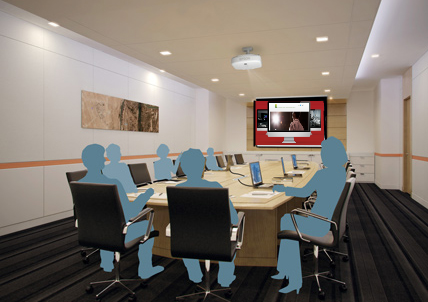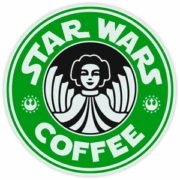RFQ Template for Software Project
Free Software RFQ Template CJJ Tech Solutions POS SHOPEEZE
Additionally available is a Open Office .odt extension version of the RFQ template for those who do not have Word: Free Software RFQ Template CJJ Tech Solutions POS SHOPEEZE(.ODT).

|
CJJ TechSolutions
SHOPEEZE |
|
Point of Sale Software |
|
Final Report |
|
|
|
To be submitted on Nov 23, 2013 by:
to:
|
|
November 23rd, 2013 John Doe, Jane Doe, Jack Doe CJJ Tech Solutions
Body Threads
To Body Threads representative:
Enclosed is the project design for your new point of sales (POS) software. My team has carefully prepared this solution according to the software requirement specifications (SRS) priorly submitted. Inside this report you will find details and overview of your POS system, with the majority of the report dedicated to explaining the comprehensive offering of system features. Effort has been placed on both form and function equally with special attention paid to ensuring all of the hardware OS work flawlessly with the POS software.
CJJ is prepared to dedicate the time and attention necessary to complete a project of this size. Client meetings both on the phone and in-person are recommended and available throughout the process to ensure the project is on track.
It is our goal to create and maintain 100% client satisfaction. If ever we are not hitting this goal in our process together, please do not hesitate to contact me and I will rectify the situation immediately.
Sincerely,
Project Manager
|
Table of Contents
Report Cover………………………………………………………………………………………………………[1]
Welcome Letter…………………………………………………………………………………………………..[2]
Table of Contents…………………………………………….………………………………………………….[4]
Introduction……………………………………………………………………………………………………….[5]
Specifications………………………………………………………………………………………………………[6]
Elements of POS.……………………………………………………………………………………………[7-17]
Database…….…………………………………………………………………………………….………………[18]
Deliverables……..……………………………………………………………………………………….………[19]
Development Schedule…………………………………………………………………………………[20-21]
Development Schedule Legend………………………………………………..…………………………[22]
Introduction
To us:
CJJ Tech Solutions is a premier software company specializing in point of sales and e-commerce software solutions. Our mission is to create the ultimate shopping experience for customers through the ultimate CRM-POS system for our clients.
To our goal:
CJJ is committed to producing the highest quality software possible to satisfy all the needs of your small business or large company. Our promise is to work tirelessly until you, our customer, our well being, are completely satisfied with the quality of software and level of treatment expected in the professional world.
To our product:
Our point of sale system (POS) is a systemized process of selling, recording & ordering merchandise.The Advanced POS systems incorporate member purchasing statistics, sale conversion tracking, and a host of other high-tech integrations.
Specifications
Review of Proposal
CJJ’s understanding of the requirements for this project are as follows:
- Reduce errors by scanning prices
CJJ understands this requirement to be that the POS system being developed will work with a barcode scanner and be able to read barcodes of products. That in turn will be attached to a database with relevant product information such as price and SKU number.
- Track inventory levels
We understand this to be that the software is require in some (unspecified) way
is to track the inventory in the store so that the information can be used in such a way that keeping the stores inventory full is easier.
- Automate inventory purchasing
Again We understand this to be that the software is required in some (unspecified) way to automate the purchasing of stock for inventory.
- Track weekly, monthly, and annual sales
CJJ has understood that the software is to track the sale of products in groups based on time. Those time frames being weekly, monthly, and annually.
- Save time
CJJ has taken this requirement to simply mean that Body Threads simply wants to save time in their daily activities. Those being sale time, inventory management time, and sale data management.
- Improve the store’s operation
Much like the Save Time requirement; CJJ simply believes this requirement is satisfied by lowering the time of labor intensive work with the integration of the computerised Point of Sale system.
Design Approach
Basic Design: The Point of Sale system is mainly a software program. However, the unit as a whole is comprised of the computer itself, the software, and all the peripherals attached to the POS such as a barcode scanner, receipt printer, and a credit card reader for example. Body threads will have one or more of these POS terminals set up in their store to conduct business. The POS works by having a sales associate sign in to the terminal. Once signed in, a sale can begin. The barcode scanner will read a SKU number on the tag and the relevant information for the sale of item will appear on screen. This will continue until all the items have been scanned. Once all items have been scanned the sale can be completed by accepting payment of any type. After the sale is done the computer will contact and update the local inventory database as well as the sales database.
Figure 1.Basic Design Flow
In the next sections, titled Design Solution, there will be a more in-depth showing of the main modules and functions of the Basic Design (Figure 1).
Design Solution: Clean modern designed shopping cart that is built into hardware according to the specifications.
Elements of POS & Accompanying Module Designation
Clock In/ Out – Module will offer capability for employees to clock into timeclock system and get a heads up view of the hours they worked during the week and how close they are to finishing out their work week. Notices will be shown for getting close to overtime and any overtime will be signaled with red hours counted on a separate line.
Mail/ Client – Module will offer the ability to email notifications when inventory is running low, sales data and other statistics on a schedule based on a pop-up calendar.
Manager – Module launches company dashboard that gives specs on inventory levels, sales and employee management related to the timeclock. Accessible from the manager dashboard are report print outs, CSV exports and data chart analysis.
Feedback and Help – Module offers access to help archives and search functionality to find answers to questions and troubleshooting resources. Additionally the module offers a contact form for support that spits out support tickets. Lastly, a phone number for customer support is provided. Feedback and Help can also be accessed by clicking the question mark in the top right hand corner.
Elements of POS & Accompanying Module Designation Continued
Settings – Module launches multiple options for adjusting user preferences. If admin is logged in, Settings module is expanded and allows system-wide and user-wide preference changes. Some of the changes that can be made under the admin account are user password resets, new account creation, changes to sale conditions, changes to reports, changes to inventory management, changes to merchandise, and other options like colors, fonts and the backup of data.
Close – Module closes the POS software. If a report is open and has not been priorly saved, a warning message will pop-up with an option to save the report. Program can be closed by clicking the white X in the top right hand corner.
Pay (F2) – The module will open up options/methods of payment and a digital keyboard to enter prices if the payments are split. After payment is accept/received triggers receipt and cash register extensions.
New Sale (F4) – This module opens up the POS for its intended function. Starts scanner. Builds GUI for sale.
Void – This modules cancels the current sale with managers permissions.
Elements of POS & Accompanying Module Designation Continued
Return – This module begins similar to a regular sale except its returning merchandise to the inventory. And returning cash.
Split Sale – Module will allow for more than one method of payment. Will open up digital keypad to enter in an amount and chose a method of payment. After payment is received/accepted the sale can continue, or finish with another payment with another or same method. Prints receipts. ends sale.
End Day (F7) – Closes the POS down for the day. it will shut down externals, opens drawers, print terminal sale data. It will shut down when everything is done.
Switch user (F8) – Switches the user of the terminal so that data can be recorded accordingly to the associate.
Item lookup – Module opens up a menu of more methods of identifying a product. Such as
categories, brands, colors, etc.
Elements of POS & Accompanying Module Designation Continued
$ drop (F5) – The module is only accessible outside of a sale. Manager override is required for the process to continue. Module pops up a digital keypad to enter in an amount requested/given to the register for more cash in the drawer.
$ payout (F6) – The module is responsible for the reverse option of the $ drop function. When too much money is in the register the manager is requested to pick up a certain amount of cash. A digital keypad pops up to have an amounted entered and upon approval the register pops open. Module is complete when the register is closed.
Elements of POS & Accompanying Module Designation Continued
Full screen On/Off – Simple function that just make the program full screen and borderless.
X report -This button opens up sub menus to access all sorts of reports for individuals, groups, specific times, days, products etc. and allow for them to be saved to a location, sent to a printing device already installed to the computer, or the employee email system for each user.
Elements of POS & Accompanying Module Designation Continued
Add coupons – Allows admin users to enter in new coupon promotion. Coupon promotion entry screen
Print coupons – The module will simply print out the promotional coupons that are currently in the programs “Add coupons” button.
Line discount – Applies discount to the item selected only and not the total.
Elements of POS & Accompanying Module Designation Continued
Receipt discount – This button is if the customer did our online survey which gives a code to write down on the receipt to receive an additional 20% of their next in store purchase. The employee then types in the code that was written down and it will give the customer a 20% discount off their purchase.
Print gift receipt – This button will print off a gift receipt which will have all the purchased merchandise and will have a code instead of a price. The employee can type in the code so they can get the price of the merchandised that was sold and either return the merchandise or exchange it for a different item.
Document notes – Adds chronological documentation ability to customer relation database, and meta data for merchandise, coupons & discounts. Meta information is used by the search function and items/customers tagged with the proper meta data will be easier to find in the system search feature.
Elements of POS & Accompanying Module Designation Continued
Tax exempt – This module pops up a small form to fill in name and type of tax exempt status. Prints a little receipt to be put the drawer to maintain bookkeeping.
Open drawer – This button sends a request to the manager to use their code to unlock the drawer. The drawer pops open and can be done whatever with. Used for if incorrect change was given for example.
Add customer –Two buttons are located on the UI for the same module. The module will pop up a simple form for adding a customer to the database. Upon completion the customer is automatically selected for the current customer for reward benefits.
Elements of POS & Accompanying Module Designation Continued
Edit customer – The edit customer module will either edit the current customers data in the system (if in a sale w/ customer in the database) or will popup a window to search and edit a customer in the database. If no customer, the button is grayed out.
??Add purchase invoice – This module allows for an 8×11 size print out of the purchase to be sent to an installed printer or thumb drive to be printed out and used as a invoice.
Add product – This module opens a window that allows for someone to add a new product into the inventory database. A GUI with multiple text boxes allows for all the relevant fields to be filled in regarding a new product.
Elements of POS & Accompanying Module Designation Continued
Edit product – This module opens a window up displaying the relevant information on a given product. Then allows for the data to be changed. An example would be for a price drop on an item.
Save sale – Allows for the sale to be saved to the hard disk. If a customer needs to return (if they forgot their payment method for example) at a later time to complete the transaction the transaction does not have to start anew. The save sale module prints a receipt with a barcode that acts as a pointer to the sale. When scanned the sale can continue exactly where it left off.
Unfinished sales – At the end of the day, if any saved sales have not been completed the Unfinished sales module will open a display showing all outstanding transactions which can then be kept, or deleted at the managements discretion.
Elements of POS & Accompanying Module Designation Continued
Find Customer – At the beginning of a sale, the sales associate may enter in the customers name to bring up their account for the reward benefits.
Search and Search text box – Allows for a product to be searched by SKU# or name in order to find a products information.
Sale information area – This area shows a running list of what has been scanned in the sale. Shows the SKU, Product name, Amount indicator, discount %, total before tax, and trash button to remove it from the sale. Has a discount button for the entire sale during events or coupons. Displays the total before tax, total tax, and total plus the tax.
Database
Database Layout: – Here is the basic layout of the custom made database.
Deliverables
This section will list the items to be delivered upon completion of the project.
- Final Report of project.
- Documentation of the projects development
- Documented change list
- A User manual
- Honeywell Dolphin 99GX Hand held scanning device
- Custom POS Software installed on Dell XPS XPSo27-3575BLK 27-Inch All-in-One Touchscreen Desktop (Piano Black)
- Cash Drawer MMF USB Electronic (18 Inch)
- Symbol LS 2208 Corded USB Laser Barcode Scanner – Black
- Wasp WPL25 Desktop Barcode Printer
- Verifone MX870 Credit Card Reader Touchscreen
- Receipt of transaction
- Custom built databases (to be maintained by Body Threads)
- SHOPEEZ Software Case with 2 Installation Discs (see below)
Development Schedule
This section is a shortened and simplified version of the project timeline CJJ followed in the building of the Point of Sale software.
Week 1
This week will be the process of collecting assets and market research for Point of Sales (POS) software. Team members will engage with other software POS development companies to discover and analyze the current status of POS software. Collection should take no longer than the first two weeks.
- Asset collection (Monday, Tuesday & Wednesday) X X X
- Contact competitors/Discovery (Wednesday, Thursday, Friday) X X
Week 2
Formalizing the development plans and running through some preliminary code at this stage. Also should communicate with client that we have the bone structure for the code up and running and our processes are moving along smoothly.
- Development plans (Monday & Tuesday) X X X
- Running Pre-Lim Code (Wednesday & Thursday) X X
- Send email to client with outline of pre-lim code and explanation that project is running along well. (by Friday at latest) X
- Processes are up and running and all the testing environments are established. (Testing goes Wednesday-Friday) X X X
Week 3
Diving into the coding this week and building out the modules. Using the RAD development model we will modularize the different components into front-end and back-end. While half the team tackles the back-end with a basic front-in mockup representation. The other half of the team will build out the front-end functionality.
- Coding for each module is assigned and starting with the most pertinent modules and working out towards the extraneous, each division (pertinent, necessary & extraneous) will be completed in the following weekly order: Week 3: pertinent Week 4: necessary Week 5: extraneous X X
Development Schedule Continued
Week 4
Module performance and integration testing this week. Debugging and error catching will be addressed heavily at this stage to ensure proper output for variable user inputs.
- Combining modules and testing their integration this week (Finish by Friday) X
- Run debugging and error handling (Monday, Tuesday & Wednesday) X
- Go over checklist to ensure that the program outputs the proper results for each set of variable user inputs X
- Outsource the development of the databases required.
Week 5
Run through the program from start to finish and make sure it flows properly without any errors according to 20 different user “handling preferences” created earlier.
- Establish schedule for user testing. X
- Run program and match each piece of working code with the corresponding module and error handling documents. X X
- Fix any found errors and write supporting patch documentation. X X
Week 6
Create a presentation with a full demo of the software product. Features of the software will be highlighted such as inventory ordering & tracking, customer relationship management and quick database querying.
- Build presentation with slides that accompany the software demo X X
- Integrate the built databases into the system.
- Write oral presentation and practice delivery X
- Mock meeting and software demo practice run X X
- Schedule software demo X
- Execute software demo X X
- Follow up with client (Week 1 & Week 3 after deployment) X
DEVELOPMENT SCHEDULE LEGEND
John X
Jane X
Jack X
Enjoy this RFQ template? Check out The Top 50 FREE Business Submission websites next.



























Leave a Reply
Want to join the discussion?Feel free to contribute!